"Schleswig-Holstein". The ship is a participant in two world wars
On September 1, 1939, the salvo of the battleship Schleswig-Holstein marked the beginning of a new, perhaps one of the most terrible milestones in stories humanity. It was with these shots that the German attack on Poland began, the countdown to the bloody World War II started.
Home
However, the history of the ship began long before the events described above. The Schleswig-Holstein was a Deutschland-class battleship. Belonged to the last series of pre-dreadnoughts of five ships of the Kaiserlichmarine. It was laid down in August 1905, and entered service in July 1908. Three years is a rather short period for building such a large ship. But despite this, it entered service already obsolete. After all, the Dreadnought has already appeared in England, which made a breakthrough in world shipbuilding.
In 1916, Jutland became the first serious test for Schleswig-Holstein and its sisterships as part of the German Fleet open sea. The ship fired about 20 shots, received a serious hit on the port side, but remained in service.
This battle showed the German sailors what only one torpedo does with a Deutschland-class battleship. On June 1, taking advantage of the predawn fog, a flotilla of English destroyers fired 17 torpedoes at the wake of the German battleships and ironclads. One or two of them hit right in the center of the Pommern, Schleswig's sister ship. In the darkness, a huge fireball swelled up, which illuminated everything around, and the affected ship broke in two and soon went under water.
The interwar period
Germany, which lost in the First World War, suffered serious losses both economically and politically. Under the Treaty of Versailles, the country essentially lost its armed forces. It was also completely forbidden to have a submarine fleet. And 12 destroyers and 12 destroyers, 6 light cruisers and eight battleships remained in the surface, among which was the Schleswig-Holstein, which became the flagship after extensive modernization carried out in 1924–1926. Eight out of 12 boilers were transferred to oil heating. They dismantled all 170-mm anti-mine guns, replacing them with 150-mm ones, thereby freeing up space for strengthening air defense. He served as the flagship of Schleswig-Holstein for nine and a half years, until 1935. After it was converted into a training ship.
On August 25, 1939, the Schleswig-Holstein entered the bay of Danzig on a courtesy visit, instead of the smaller ship originally assigned for this, which allegedly crashed.
Trojan horse
One can imagine the surprise of the inhabitants of Danzig, who on August 25 saw how the Schleswig-Holstein, having weighed anchor, went at full speed to the Westerplatte peninsula, on which the Polish garrison was located. But then he suddenly turned around and stood up in his original place. The attack, originally scheduled for August 26, was decided to be postponed, but on September 1, nothing could stop the German attack. Germany invaded Poland, and the Schleswig-Holstein at 4:47 in the morning began shelling the Polish fortifications on Westerplatte. This is how the first volleys of the Second World War were heard.
A little later, a company of marines landed on the shore, which had previously secretly arrived on an armadillo. The Schleswig-Holstein, meanwhile, remained in the Vistula delta for the following weeks and fired on the positions of the Poles.
The service of the battleship continued, and in April 1940 he took part in the invasion of Denmark, where he supported the landing German troops.
Service to the last
When this operation was completed, the battleship returned to Germany, where it became the flagship of the head of the training units of the Kriegsmarine. However, in 1943 it was decided to return the ship to the combat fleet. This was due to a shortage of oil, while some of the Schleswig-Holstein boilers could still run on coal. In October-December 1944, the battleship was being upgraded into an escort ship with an increase in the number of anti-aircraft guns, the installation of radar, new fire control systems and other equipment. In December, the Schleswig-Holstein was raided by the British aviation, received three bomb hits and ran aground in the Vistula delta, near Gotenhafen (Gdynia).
Schleswig-Holstein took part in the defense until the last moment. On January 25, 1945, the flag and pennant on the battleship were lowered, the remnants of the team were sent to the land front, to the garrison of Marienburg (Malbork). But on March 21, 1945, when the city was completely captured, the surviving personnel set off the explosive charges laid in the skeleton of the ship.
In the spring of 1946, the Schleswig-Holstein was raised by the rescue service of the Soviet fleet and towed to Tallinn. And on June 25, 1947, due to the impossibility of recovery, the battleship was flooded in the area of the Neugrund Bank in the Gulf of Finland.
A special place in the history of the Second World War is occupied by military operations at sea. Watch a video from Wargaming that compares the fleets of the opposing countries. Find out how the composition, number and ratio of ships changed during the war.
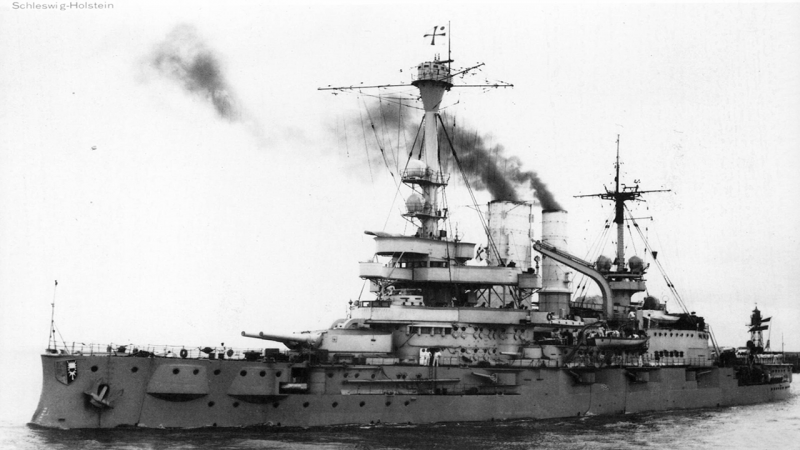
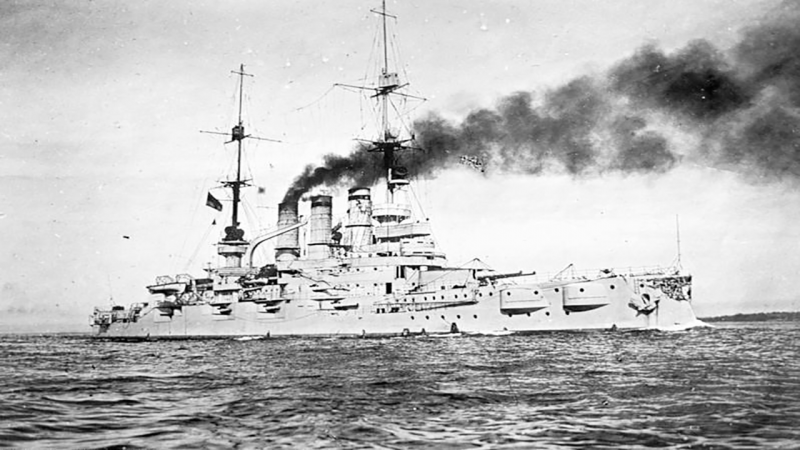
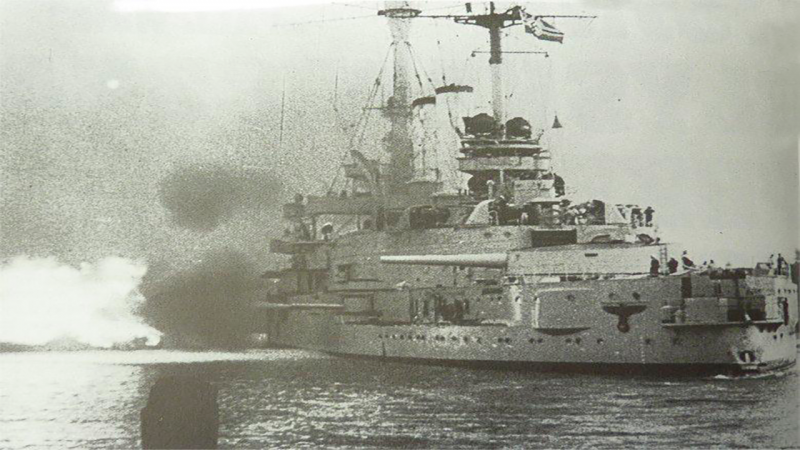
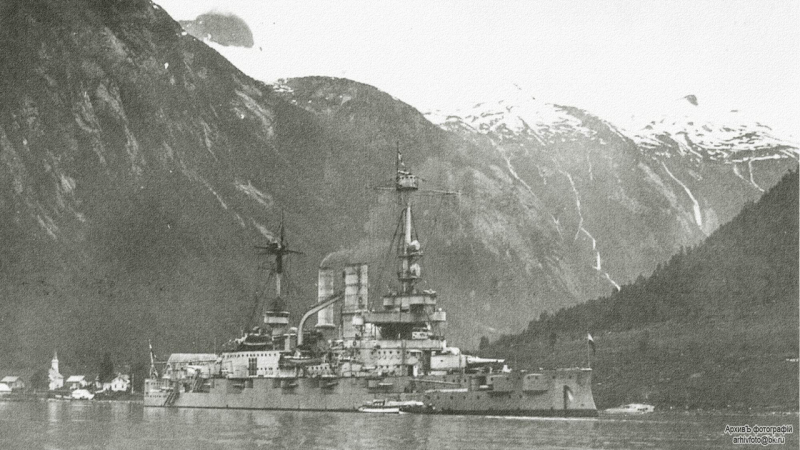
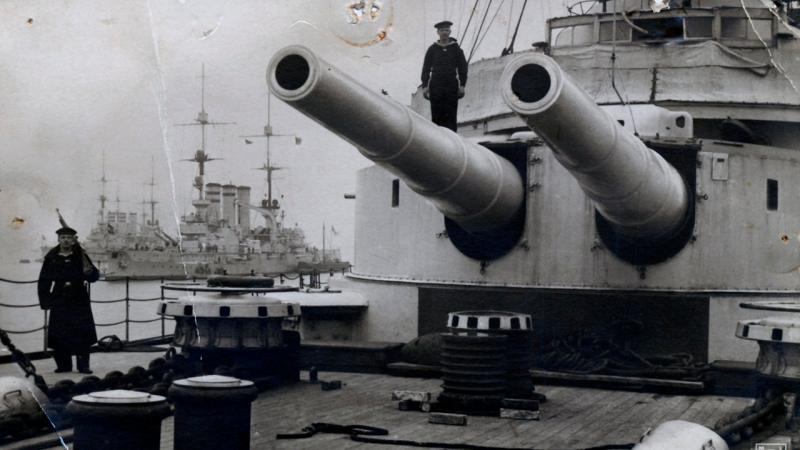
Information